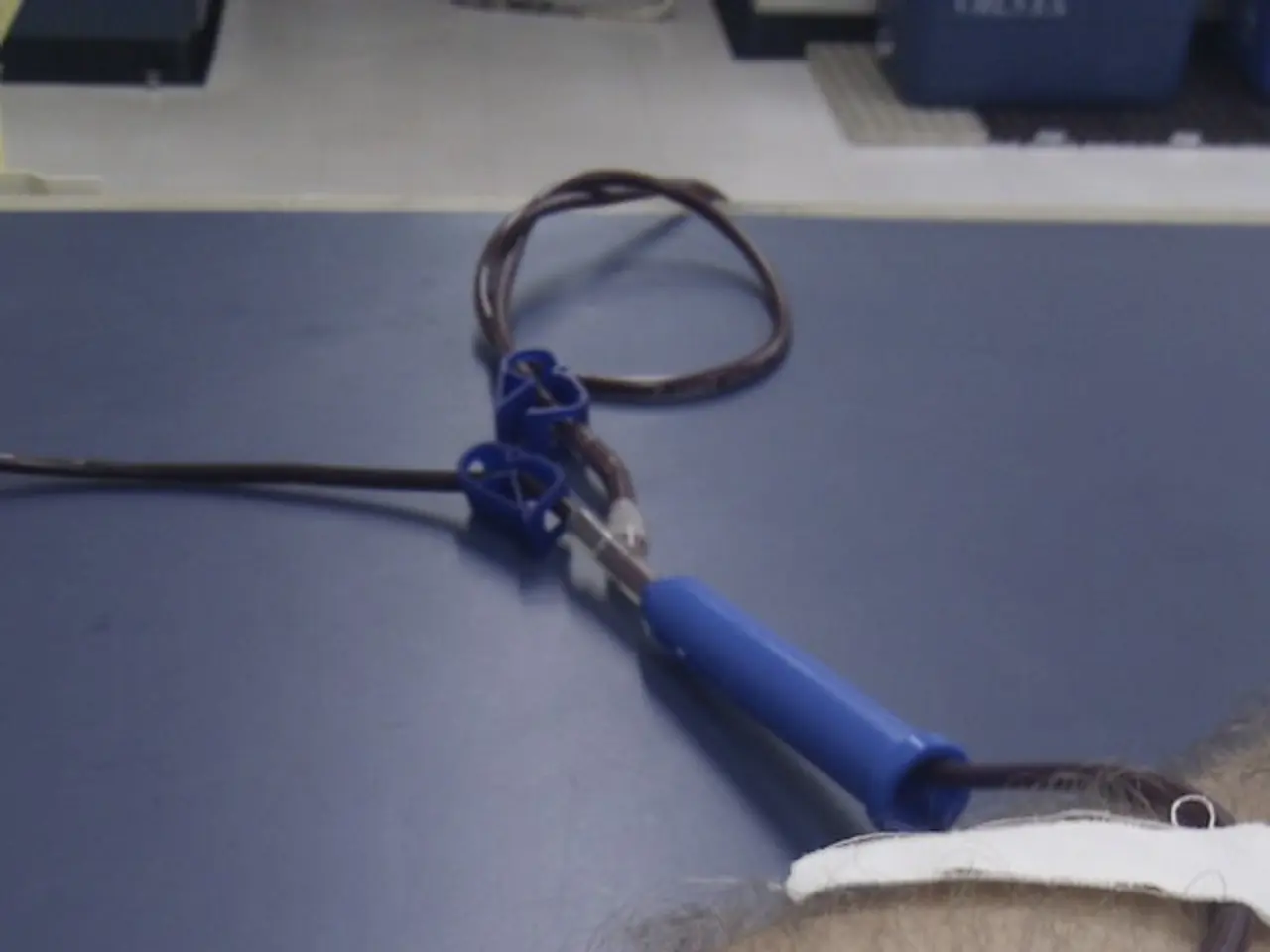Swelling in the extremities: Identifying signs, underlying reasons, and management strategies
Peripheral Edema: A Potential Sign of Deep Vein Thrombosis
Peripheral edema, a condition characterized by a buildup of fluid in the extremities, can sometimes be a sign of a serious health issue – deep vein thrombosis (DVT). This potentially life-threatening condition can cause noticeable swelling in an extremity, particularly in one leg[1][3][5].
If you have recently experienced significant swelling in an extremity, it's crucial to contact emergency services immediately. DVT, if left untreated, can lead to dangerous complications such as pulmonary embolism[1].
Doctors diagnose peripheral edema through a series of tests, including a physical examination, medical history review, chest radiography, electrocardiogram, renal ultrasound, liver ultrasound, liver function tests, and blood tests[2].
Treatment for peripheral edema typically focuses on addressing its underlying cause. The specific treatment will depend on the cause, but may include medication, surgery, or lifestyle changes[2].
In addition to medical intervention, there are steps you can take to manage peripheral edema symptoms. Elevating swollen limbs, following a low-salt diet, and engaging in regular exercise can help alleviate symptoms[4].
It's important to note that peripheral edema can indicate various underlying conditions, not just DVT. These may include cellulitis, obstruction in a vein, obstruction of the lymph vessels, congestive heart failure (CHF), liver failure, or kidney disease[1].
Swelling on one side of the body is often a sign of DVT, cellulitis, obstruction in a vein, or obstruction of the lymph vessels. On the other hand, swelling on both sides can indicate CHF, liver failure, or kidney disease[1].
While unilateral leg swelling and edema are classic signs raising suspicion of DVT, these symptoms are not specific and can overlap with other conditions[3]. Therefore, clinical assessment tools such as the Wells score are used alongside physical findings to estimate the probability of DVT and guide further testing[5].
In summary, unilateral peripheral edema, particularly in the leg, is a common and important clinical sign of DVT but requires careful evaluation to confirm diagnosis and rule out other causes[1][3][5]. If you are experiencing symptoms of peripheral edema, it's essential to consult a healthcare professional for proper diagnosis and treatment.
[1] Mayo Clinic. (2021). Deep vein thrombosis (DVT). Retrieved from https://www.mayoclinic.org/diseases-conditions/deep-vein-thrombosis/symptoms-causes/syc-20361846
[2] NHS. (2021). Peripheral oedema. Retrieved from https://www.nhs.uk/conditions/peripheral-oedema/
[3] UpToDate. (2021). Clinical manifestations of DVT. Retrieved from https://www.uptodate.com/contents/clinical-manifestations-of-deep-vein-thrombosis-dvt
[4] NHS. (2021). Swollen ankles and feet. Retrieved from https://www.nhs.uk/live-well/healthy-body/swollen-ankles-and-feet/
[5] American College of Chest Physicians. (2020). Antithrombotic therapy and prevention of thrombosis, 12th ed: American College of Chest Physicians evidence-based clinical practice guidelines. Chest, 157(6), e813-e850. doi: 10.1016/j.chest.2019.12.005
Read also:
- Budget cuts at federal and state levels jeopardize advancements in fighting HIV and AIDS within Dallas County
- Strategies for Maintaining and Boosting Physical Activity as You Grow Older
- Understanding Prediabetes: A Precursory Condition to Diabetes
- Strategies for Strengthening a Nigerian Infant's Immune System







